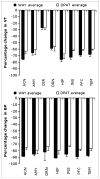Modeling considerations for 11C-CUMI-101, an agonist radiotracer for imaging serotonin 1A receptor in vivo with PET
- PMID: 18344443
- PMCID: PMC3580231
- DOI: 10.2967/jnumed.107.046540
Modeling considerations for 11C-CUMI-101, an agonist radiotracer for imaging serotonin 1A receptor in vivo with PET
Abstract
Several lines of evidence demonstrate involvement of serotonin 1A receptors (5-HT1ARs) in the pathophysiology of neuropsychiatric disorders such as depression, suicidal behavior, schizophrenia, and Alzheimer's disease. We recently published the synthesis and initial evaluation of [O-methyl-11C]2-(4-(4-(2-methoxyphenyl)piperazin-1-yl)butyl)-4-methyl-1,2,4-triazine-3,5(2H,4H)dione (11C-MMP), a 5-HT1AR agonist. Here we determine the optimal modeling parameters for 11C-MMP under its new name, 11C-CUMI-101, in Papio anubis.
Methods: PET scans were performed on 2 adult male P. anubis; 166.5 MBq +/- 43.0 (4.50 +/- 1.16 mCi) of 11C-CUMI-101 were injected as an intravenous bolus, and emission data were collected for 120 min in 3-dimensional mode. We evaluated 4 different models (1- and 2-tissue compartment iterative and noniterative kinetic models, basis pursuit, and likelihood estimation in graphical analysis [LEGA]), using binding potential (BPF = Bmax/Kd) (Bmax = maximum number of binding sites; Kd = dissociation constant) as the outcome measure. Arterial blood sampling and metabolite-corrected arterial input function were used for full quantification of BPF. To assess the performance of each model, we compared results using 6 different metrics (percentage difference, within-subject mean sum of squares [WSMSS] for reproducibility; variance across subjects, intraclass correlation coefficient [ICC] for reliability; identifiability based on bootstrap resampling of residuals; and time stability analysis to determine minimal required scanning time) at each of 6 different scanning durations. Models were also evaluated on scans acquired after injecting the 5-HT1A antagonist [N-(2-(4-(2-methoxyphenyl)-1-piperazinyl)ethyl)-N-(2-pyridinyl) cyclohexane carboxamide] [WAY100635] 0.5 mg/kg, intravenous) and the 5-HT1A agonist 8-hydroxy-2-(di-n-propylamino)tetralin) [8-OH-DPAT] 2 mg/kg, intravenous).
Results: All metabolites are more polar than 11C-CUMI-101, and no significant change in metabolites was observed in the blocking studies. The free fraction is 59% +/- 3%. We determined that 100 min of scanning time is adequate and that for the region-of-interest (ROI)-level analysis, the LEGA model gives the best results. The median test-retest percentage difference for BPF is 11.15% +/- 4.82% across all regions, WSMSS = 2.66, variance = 6.07, ICC = 0.43, and bootstrap identifiability = 0.59. Preadministration of WAY100635 and 8-OH-DPAT resulted in 87% and 76% average reductions in BPF values, respectively, across ROIs.
Conclusion: On the basis of the measurable free fraction, high affinity and selectivity, adequate blood-brain permeability, and favorable plasma and brain kinetics, 11C-CUMI-101 is an excellent candidate for imaging high-affinity 5-HT1ARs in humans.
Figures






References
-
- Kasper S, Tauscher J, Willeit M, et al. Receptor and transporter imaging studies in schizophrenia, depression, bulimia and Tourette’s disorder: implications for psychopharmacology. World J Biol Psychiatry. 2002;3:133–146. - PubMed
-
- Wedzony K, Mackowiak M, Fijal K, Golembiowska K. Evidence that conditioned stress enhances outflow of dopamine in rat prefrontal cortex: a search for the influence of diazepam and 5-HT1A agonists. Synapse. 1996;24:240–247. - PubMed
-
- Lejeune F, Millan MJ. Induction of burst firing in ventral tegmental area dopaminergic neurons by activation of serotonin (5-HT)1A receptors: WAY 100,635-reversible actions of the highly selective ligands, flesinoxan and S 15535. Synapse. 1998;30:172–180. - PubMed
-
- Bibbiani F, Oh JD, Chase TN. Serotonin 5-HT1A agonist improves motor complications in rodent and primate parkinsonian models. Neurology. 2001;57:1829–1834. - PubMed
-
- Hogg S, Andrews N, File SE. Contrasting behavioural effects of 8-OH DPAT in the dorsal raphe nucleus and ventral hippocampus. Neuropharmacology. 1994;33:343–348. - PubMed
Publication types
MeSH terms
Substances
Grants and funding
LinkOut - more resources
Full Text Sources
Other Literature Sources
